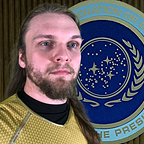Ant-Man and the Wasp: Pampering the Inner Child
If you’ve read my review of the previous Ant-Man film you’ll already know that I was not much of a fan. Sophomoric, poorly-written, and poorly-acted, it struck me as a failure on almost all accounts. I still pine for the Edgar Wright version that might have been.
Still, moviegoing these days is one of my favorite ways to relax, as well as connect with one of my best friends (who happens to be a huge Marvel buff). When she asked me to go see Ant-Man and the Wasp it was an easy yes for those reasons alone. Even if I hated the film, I’d be spending quality time with a friend, and I’d have fodder for another irritated review. Win/win.
Please beware, spoilers will follow.
Going to see this movie with low expectations helped: Ant-Man and the Wasp is no genius of artistic composition. However, I don’t believe it needs to be. Rather, I think it does a good job of “being itself,” something not all summer blockbusters can claim. If it is taken at face value, for what it’s trying to be (pure, somewhat mindless, entertainment) it meets the mark of satisfaction.
This film surpassed the original in several areas. Firstly, it managed to produce a script that is humorous without falling prey (as frequently) to the modern comedy pitfall of only including comedic elements at the expense of a person or group. There was some of this lower-bar humor, but most of the funny elements were played out through shrink-tech gags, carried by Marvel’s powerful special effects work. In fact, the word that comes to mind when I consider this latest installment is: intentionally-wholesome.
Secondly, what came across as over-the-top sappy sentimentalism in the last film is, in the sequel, given new life, so that the relationship between Scott Lang (Ant-Man) and his daughter actually becomes enjoyable. This is where Paul Rudd actually comes through most, since his comedy otherwise tends to feel quite wooden (with one notable exception which you’ll have to experience for yourself). Likewise, while the comedy of differences was applied to Lang’s partners in their security consulting business, Luis, Dave, and Kurt, it was subtle enough this time around to remain relatively inoffensive. These three acted the generic stooges role more than any powerfully negative trope, playing to the simple humor of slapstick and cultural disassociation (we can explore the effects of this sort of humor another time, but at least we can agree that the comedy of differences isn’t anything new to human history).
Following on the wholesomeness trend was the nature of the antagonist, “The Ghost” (Ava), whose motivations for undertaking acts of evil was made abundantly clear without much fanfare. Suffering her whole life from extreme chronic pain due to her state of quantum instability (caused by an accidental explosion when she was a child), Ava’s trust had been toyed with by S.H.I.E.L.D. who took her in, gave her a stabilizing suit, and trained her to be an assassin — all before dropping her when the agency collapsed, proving (at least to Ava) that they never had a serious intention of helping her. Now that the technology keeping her body in one piece is failing to keep up with her growing quantum phasing, Ava’s state is a desperate one. Combined with this defined backstory, we have her foster-parent relationship with Bill Foster, who clearly holds tender, fatherly feelings for her. Together, these elements create an antagonist who is highly sympathetic — which makes sense, since it seems that the writers may be assembling yet another group of secondary Marvel heroes for future franchise expansion. Even the secondary antagonist, the criminal black-marketeer Sonny Burch, is played for gentle gags rather than serious villainy, and from the outset the viewer expects him to face numerous, and hilarious, defeats at the hands of the heroes.
The concentration on “milder antagonists” is good, considering how dark and intense the last Avengers film was; Ant-Man provides a break from a storyline where the stakes have increasingly grown. But, it also works as a superhero film designed to cater to the youngest among us — the point which really allows me to forgive the messier aspects of the script and directing. Built to cater to the gentler disposition of a younger audience, the film maintains a tone more reminiscent of the old Superman cartoons from the 40’s than the sort of high-octane, hyper-violent, fare that’s the modern norm. While still filled with action, the focus is maintained on the clear dichotomy of hero vs. villain, where the bad guys lose (and, depending on why they are bad guys, can be redeemed) and the good guys win. Only in the mid-credit teaser does this tone change, as the timeline of Ant-Man and the Wasp is tied into that of the last Avengers film (which, if you remember, ended with the supposed death of half of all lifeforms, and half of all superheroes, in the universe).
There are plenty of flaws here, and as other reviewers have suggested: this film is largely forgettable. Still, it serves its purpose well. If you want to have your inner ten-year-old entertained for two hours, this film is likely to fulfill your need.
